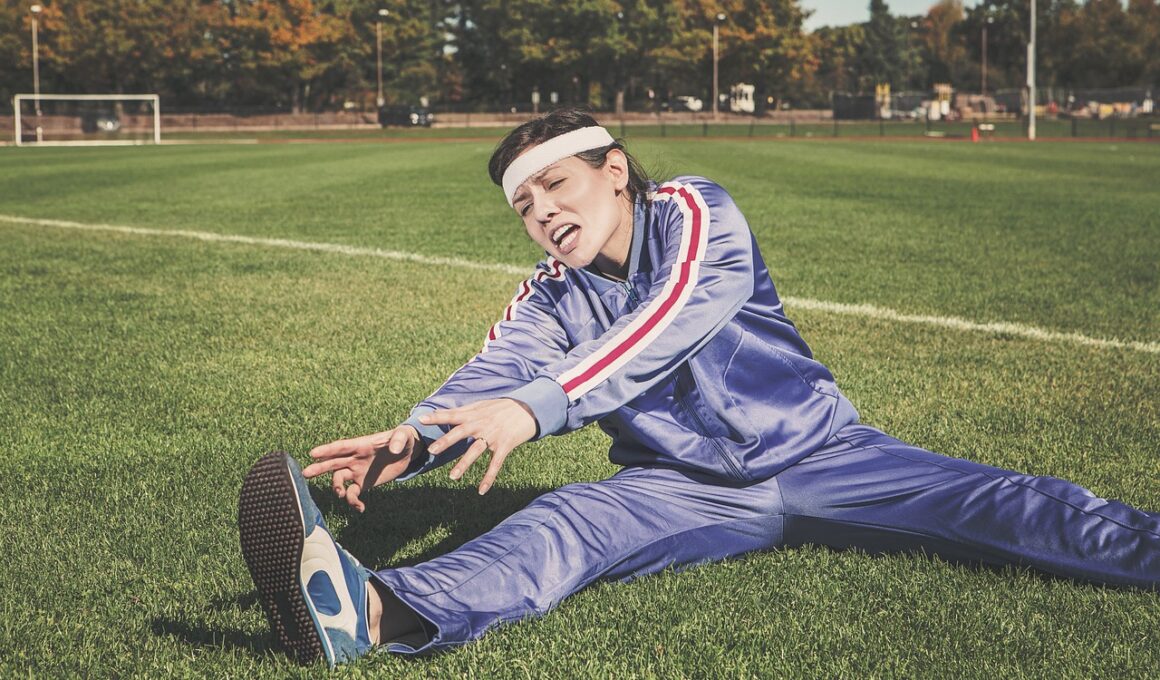Using Visualization to Improve Athletic Performance
Visualization is a powerful tool that many athletes employ to enhance their performance. This mental training technique involves vividly imagining oneself executing specific skills in detail. Research shows that visualization can influence muscle memory, increase confidence, and reduce anxiety. Athletes visualize not just the positive outcomes of their efforts but also the entire process, including warm-ups, strategies, and potential obstacles. When visualization is practiced consistently, it creates mental pathways that the brain can follow during actual performance. This technique is widely used across various sports, from basketball free throws to marathon running. The ability to see oneself succeed prepares athletes mentally, leading to improved focus and motivation. In competitive environments, where the difference between success and failure can be marginal, the effectiveness of visualization can act as a crucial differentiator. By visualizing their performance, athletes can also familiarize themselves with their competition and develop strategies to outmaneuver them. This proactive approach helps them feel more in control during high-pressure situations. Overall, visualization serves as a complementary, empowering technique that fuels psychological strength in athletes.
One of the primary benefits of visualization is the enhancement of confidence in athletes. By regularly practicing vivid imagery of success, athletes can reinforce their belief in their abilities. This process helps in overcoming self-doubt, which is prevalent in competitive sports. For example, before a big race, an athlete may visualize crossing the finish line first, creating a positive mental image that can reduce anxiety. Visualization not only impacts emotional states but can also improve physiological responses. Studies indicate that mental practice can lead to neural activation in the areas of the brain responsible for motor control. In essence, when athletes visualize their performance, the brain cannot easily differentiate between real experiences and imagined ones. The repeated visualization of key techniques helps cement them into their subconscious, making them instinctive during competitions. Moreover, this mental rehearsal can be particularly important during recovery from injuries. Athletes facing rehabilitation can visualize their return to form, gradually preparing their minds for the challenges ahead. Consequently, visualization proves invaluable for both enhancing performance and maintaining a positive mindset.
How to Effectively Utilize Visualization Techniques
To effectively utilize visualization, athletes should begin by setting clear and attainable goals. The first step involves identifying what aspects of performance they wish to visualize, whether it’s a specific technique such as a jump shot or overall race strategy. Next, a quiet, distraction-free environment is essential for successful visualization. Athletes can close their eyes and engage their senses; hearing the sounds of the venue, feeling the weight of the equipment, or even smelling the grass of the field can enhance the experience. Practicing this method consistently reinforces the mental imagery and makes the visualization more potent. Duration is another crucial factor; short, frequent sessions of visualization are often more effective than lengthy ones. Additionally, incorporating emotional elements during visualization allows athletes to connect their mental images with feelings of pride, joy, and accomplishment. This involves creating a positive emotional state that can transfer to real-life performance. Finally, mindfulness techniques can complement visualization, helping athletes remain present and focused. By combining these practices effectively, athletes can create a powerful mental toolkit that significantly enhances their performance potential.
In addition to preparing mentally, visualization can play a role in reducing anxiety and stress before competitions. Many athletes experience pre-competition nerves, which can hinder their performance. Visualization serves as a useful coping strategy, allowing athletes to portray calm and confident scenarios in their minds. By regularly imagining successful outcomes, athletes can condition themselves to enter competitions with a more relaxed mindset. Research indicates that the benefits of visualization extend beyond performance metrics; they can influence athletes’ overall psychological well-being. Athletes who utilize visualization techniques report lower levels of stress and heightened feelings of relaxation. In turn, this can lead to improved focus during competitions, enabling athletes to concentrate better on their performance. Visualization also facilitates better preparation for various situations that may arise, including challenges faced during competitions. By envisioning potential scenarios, athletes become more adaptable and responsive, equipped with mental strategies they’ve formulated during their visualization practice. Ultimately, this tool supports athletes in maintaining their mental equilibrium amidst the pressures of competition and performance anxiety.
Supporting Research on Visualization
Numerous studies underline the efficacy of visualization as a performance-enhancing tool in sports. Research shows that athletes who engage in mental practice can experience significant improvements in their overall performance metrics. For instance, studies involving basketball players demonstrated that those who visualized successful free throws saw an increase in shooting accuracy compared to those who did not practice visualization. Furthermore, visualization is not limited to individual sports; team sports also benefit from this technique. By visualizing plays and strategies, team members can improve cohesion and teamwork. Additionally, the neural mechanisms behind visualization reveal fascinating insights into how our brains function during mental practice. Neuroimaging studies confirm that visualization activates similar brain areas responsible for actual motor execution. This suggests that the practice of visualization not only prepares athletes mentally but also facilitates physical performance by
being rooted in the brain’s motor control system. Athletes can also find comfort in the fact that they aren’t alone in using visualization. Many world-class competitors, from Olympians to professional athletes, have recognized the value of mental imagery. Athletes like Michael Phelps and Serena Williams have openly endorsed visualization techniques as part of their training regimens. Athletes at all levels can benefit from this approach, as visualization is accessible and doesn’t require special tools. The simplicity of this method makes it a great complement to physical training. As athletes incorporate visualization into their daily routines, they can increase its effectiveness by practicing regularly and integrating it into their warm-up sequences or cooldowns. Additionally, coaches can facilitate discussions around visualization, helping athletes to establish their personal visualization scripts. This encourages a deeper understanding of their goals and serves as a motivational tool during rigorous training. Through dedication and practice, visualization can be a transformative aspect of any athlete’s training philosophy.
Conclusion: The Impact of Visualization
In summary, visualization is a potent technique that can significantly enhance athletic performance and mental health. By engaging in detailed mental imagery, athletes can improve their confidence, reduce anxiety, and create a stronger mental focus. The evidence supporting the use of visualization spans various sports and skill levels, proving that anyone can benefit from incorporating its practice into their training regimen. Ultimately, athletes should view visualization as a valuable tool for optimal performance. By establishing a routine that includes visualization alongside physical training, they prepare for rigors of competition while fostering a winning mindset. As athletes continue to refine their techniques, visualization will remain a critical aspect of their mental preparation. Harnessing the power of the mind can lead to extraordinary results, both physically and psychologically. Embracing this technique as part of a holistic approach to training will not only support immediate performance but also develop resilience for future challenges. The beauty of visualization lies in its accessibility and flexibility, making it a practice that any athlete can adapt and incorporate into their journey toward success.
Through the development of visualization skills, athletes create a mental framework for achieving their goals. The practice empowers them to visualize success and fosters a sense of ownership over their training. As athletes commit to visualizing their performances and setting intentions, they simultaneously prepare their bodies for the physical demands. This synergy between mental and physical training maximizes the effectiveness of preparation. Furthermore, as they progress in their athletic careers, the importance of consistent practice cannot be overstated. Visualization isn’t a one-time event or a quick fix; rather, it’s a continuous journey of growth. By embracing visualization, athletes can learn to navigate the inevitable setbacks and challenges they may face in their pursuit of excellence. The ongoing act of visualizing allows them to adapt, evolve, and maintain focus on their goals, no matter the obstacles. In conclusion, visualization paves the way toward a more fulfilling and successful athletic journey, providing athletes with the mental tools needed to excel. As they harness the power of their minds, they create not only a vision of success but also the pathway to achieving it.


